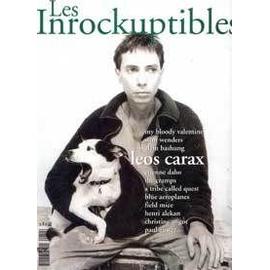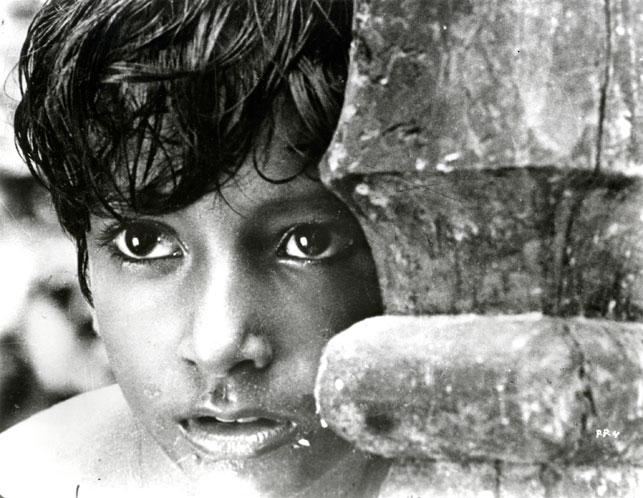This year I might have seen fewer films than I hoped but when I look back I had some incredible experiences with a few new releases and some older films I was discovering for the first time.
With each passing year even though I may find myself less and less interested in the multiplex products, I am amazed at the number of top shelf work still being produced in an environment where the notion of film as art becomes more rarefied by the day. Here are the real highlights for me. It was a year of renewed faith and one that left me wanting to see more and knowing there remains so much more for me to see and discover. To film, 2014, and what I still deeply feel is the most satisfying, human, and immersive artform we have.
Abdellatif Kechiche's Blue is the Warmest Color (2013)
Blue is the Warmest Color is an emotional highwire accomplished with only the most rigorous difficult technique. Kechiche works in the Dardennes' territory favoring close-ups, handheld camerawork, and a naturalism of image, look, and performance. The performances, especially those of Adele and Emma, rank alongside the greatest the medium has ever given us. That is, if great acting is an actor's ability to walk someone else through his or her emotional experience in a given moment. Kechiche uses sex like Noe or Dumont uses violence. The sex is unsettling but a direct and pure means for Kechiche to achieve what he is after - the most honest cinematic look ever at the harrowing emotional experience of coming out. What we are left with is a masterful film, a masterpiece, the cinema of the Dardennes taken to the next level.
Nicholas Ray's Johnny Guitar (1954)
Feverish with Ray's unique emotionalism and spatial mastery on grand display. Crawford is as powerful as ever, and this western is a world all its own. It's pulp, melodrama, and baroque art. It's no wonder it enjoys such a major reputation; it's a wonderful piece of work by a great filmmaker.
Douglas Sirk's Magnificent Obsession (1954)
My first time with this well-known Sirk, and it certainly is as loony as I heard whisperings of. But Sirk gives it tragic depth, swirling emotion, and somehow manages to transform seemingly insane form (garish music and color) and content (plotting that no one in their right mind would ever consider plausible) into something uniquely wonderful. Although I still prefer Written as it seems perhaps a little more restrained in its content and outlandish in its form, Magnificent deserves a place of greatness all its own.
Frederick Wiseman's At Berkeley (2013)
My first theatrical experience with a Wiseman film was also one of my very best theatrical experiences of the year. Wiseman combines Renoir's humanism with Ozu's patience to offer up an exhaustive and meticulously observed look at a contemporary public university. We take away a great deal from participating in some of the student discussions as well as from having access to a number of administrative cabinet meetings. Nothing feels put on. This is demanding, unadorned, naked filmmaking of the highest order that places demands with its style and four hour length but offers reaffirming sentiments on cinema and life for all willing to go along.
Agnes Varda's Cleo de 5 a 7 (1962)
More masterful than I remember from my first viewing more than twenty years ago, Varda's work separates itself from many of the early New Wave films by eschewing genre and delivering a film with a focus entirely on character. Varda's camera glides and records capturing a realness of faces and of Paris. And what we are left with is, as a capsule of its time, a film as valuable as Breathless, 400 Blows, and any of the other key Vague work from the early sixties.
Leo McCarey's Ruggles of Red Gap (1935)
The Hollywood happy ending has become an almost absolute, an artificial emotional high that a filmmaker must provide to the audience before turning the lights back on. It is troubling and says as much about the American psyche as McDonald's or Hummers. But what if there was a time when it is was not obligatory but instead the optimal way to bring the story to a close. I have seen my fair share of movies, and most of my favorites tend to shy away from the happy ending altogether. Rarely, if ever, have I seen a movie like Ruggles that without its happy ending would simply lose everything, its reason for being, its internal logic, and its deeply lasting effect. I consider this the quintessential happy ending. Now if Hollywood would only take notice.
Satyajit Ray's Pather Panchali (1955)
Ray's film contains a world of truth and heft rivaling any I know on film, yet also quite unlike anyone else's world. Warmer than Ozu, closer to a documentary-like realism than Renoir, and probably a little more alive than either, Ray does not shy away from death or difficulty and captures the buoyant feelings of innocence and happiness masterfully. A humanist film containing so much life and truth, and a work full of heart. Ray offers a spirituality so often lacking in cinema and a poetic approach to the world and the medium both rewarding and renewing.
Bill Forsyth's Gregory's Girl (1981)
A film full of heart reminding me at times of Bujalski, early Carax, and early Hartley. Gregory is a lovable, vulnerable, goofy young man and Forsyth gives many of his scenes wonderfully effective space, warmth, and playfulness. Less austere than some of his other work, the narrative looseness characteristic of Forsyth really works in his favor here. One of the best narrative capsules I have seen of the early eighties and an extremely surprising gem of a movie.
Nicholas Philbert's Etre et avoir (2002)
Less disciplined and rigorous than Wiseman, Philibert still impresses with the unique moments he is able to capture. Watching for instance a young boy realize there are numbers beyond those he already knows feels like something the cinema has never quite captured before, the awakening of a young mind. Overall the film is a very warm, patient look at an extremely gifted and giving teacher.
Frank Capra's It's a Wonderful Life (1946)
I had not seen the film in almost twenty years and had no real memory of it. What struck me first is just how well made it is - brilliantly plotted, masterfully cast and performed, and of course emotionally affecting of the highest order. Sure it is manipulative and sure it is very much a Hollywood film. But is also very human and universal and as a result very life-affirming. I am left imagining what role American film might play in today's mainstream psyche if only Hollywood still had this much talent behind their films and this much desire to connect rather than escape.
George Stevens' The More the Merrier (1943)
I imagine there have been great studies done on the correlation between viewer state of mind and a response to a work of art. Even though I pride myself on having a fairly good first response, rarely shifting significantly one way or another upon subsequent viewings, I have had occasion where I completely change my opinion. Here is such a time. I am not sure how I could have ever made comments to the contrary as I find this to be one of the most wonderful, moving romantic comedies ever made. The chemistry between Arthur and McCrea is downright dangerous and Coburn is the lovely force, both funny and wise, keeping the fires stoked. A new favorite and a lovely film I hope others get to savor soon. It brought me the exact pleasure I needed on a glum Saturday.
Joel and Ethan Coen's Inside Llewyn Davis (2013)
If Renoir is correct that every filmmaker is simply trying to improve upon the same film each time out then the Coen brothers finally get an aspect of their work right that I feel they have fallen short on the last few times - the film ending. Whereas I felt they missed the mark in No Country and A Serious Man with their abrupt, oft kilter final moments, ILD's final moments bring everything together in a masterful, fresh way that keeps the Coen's work feeling very modern and daring. It is one of their very funniest films and also one of their most accomplished.






















